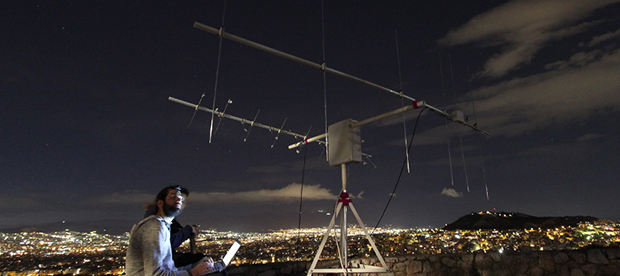 Here’s an interesting thought: it’s possible to build a cubesat for perhaps ten thousand dollars, and hitch a ride on a launch for free thanks to a NASA outreach program. Tracking that satellite along its entire orbit would require dozens of ground stations, all equipped with antennas, USB TV tuners, and a connection to the Internet. It’s actually more expensive to build and launch a cubesat than it costs to build a network of ground stations to get reasonably real-time telemetry from a cubesat. The future is awesome and weird, it seems.
Here’s an interesting thought: it’s possible to build a cubesat for perhaps ten thousand dollars, and hitch a ride on a launch for free thanks to a NASA outreach program. Tracking that satellite along its entire orbit would require dozens of ground stations, all equipped with antennas, USB TV tuners, and a connection to the Internet. It’s actually more expensive to build and launch a cubesat than it costs to build a network of ground stations to get reasonably real-time telemetry from a cubesat. The future is awesome and weird, it seems.
This is the observation the guys behind SatNOGS have made. They’re developing a platform for a completely open source ground station network, with the idea being people an institutions along every longitude and latitude would build a simple satellite tracking antenna mount, connect it to the Internet, and become part of an open source Near Space Network, capable of receiving telemetry from any one of the small cubesats whizzing around in low earth orbit.
Despite being what is probably one of the most ambitious and far-reaching projects in open source hardware, the design of the system is relatively simple: the hardware is a 3D printed alt-az mount, capable of pointing a pair of antennas anywhere in the sky. The stepper motor driver board is based on the Arduino, and the computer running each antenna node is powered by a BeagleBone Black or a WR703N router. The antenna receiver is, of course, an RTL-SDR dongle, capable of listening to all the common cubesat bands. Even the software is derived from open source projects. Tracking a satellite across the sky can be calculated with GPredict, and the team is working on an observation scheduling and management system that combines multiple ground stations for coverage across the globe.
It’s a great idea, crowdsourcing satellite tracking from people around the globe, and something that could be used by hundreds of institutions lucky enough to launch a small cube of electronics into orbit.
![]() The project featured in this post is an entry in The Hackaday Prize. Build something awesome and win a trip to space or hundreds of other prizes.
The project featured in this post is an entry in The Hackaday Prize. Build something awesome and win a trip to space or hundreds of other prizes.











